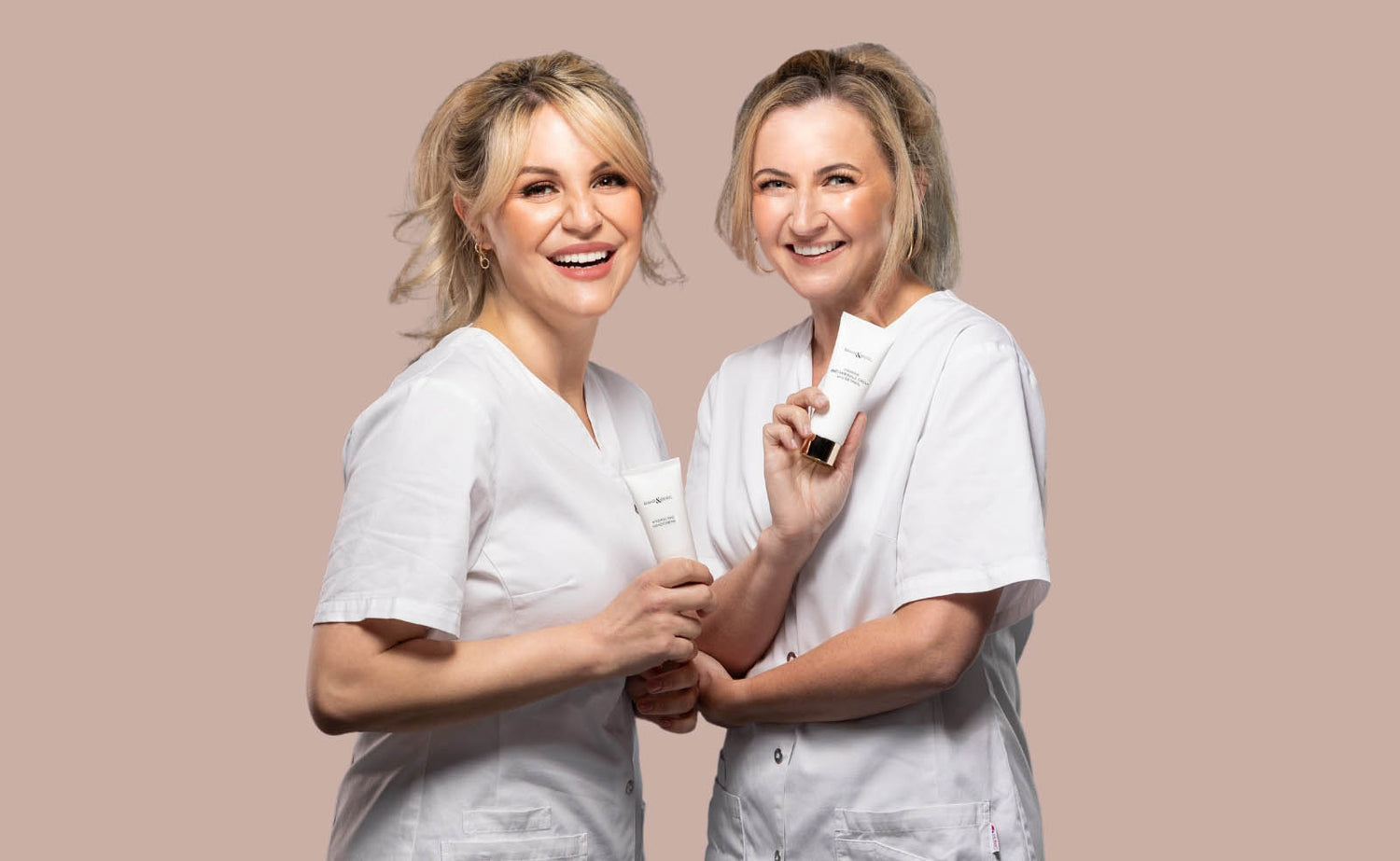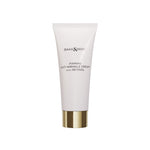AQUA:Purified water for dissolving the ingredients.
RETINOL:Retinol - also known as vitamin A - is an important ingredient in preventing and reducing wrinkles by stimulating collagen production,
to improve skin texture and promote cellular renewal.
[1]. Kafi, R., & Wang, J. (2007). “Improvement of Naturally Aged Skin with Vitamin A (Retinol).” Archives of Dermatology, 143(5), 609-618.
[2].Takahashi, M., & Katsumata, K.
(2004). “The Role of Retinoids in Skin Aging: Retinol and Retinoid Receptors.” Journal of Dermatological Science,35(3),
221-229.
[3]. Zouboulis, C. C., & Makrantonaki, E. (2009). "Retinoids in the Treatment of
Skin Aging." Current Opinion in Dermatology, 16(3), 261-266.
SCHIZOPHYLLAN:Inhibits pigment formation by reducing melanin production. It promotes collagen production, which is crucial for maintaining skin structure and elasticity and also helps reduce fine lines and wrinkles. In addition, it supports the recovery of the
skin damaged by excessive sun exposure, thanks to its anti-inflammatory and healing properties.
[1]. Park, Y. J., & Kwon, K. S. (2001).
“Schizophyllan: Effects on Collagen Production and Skin Repair.” Journal
of Dermatological Science, 26(2), 161-171.
[2]. Hiddink, EG, & Kroeze, LA (2017).
“The Role of Schizophyllan in Pigmentation and Wound Healing.” Cosmetic Dermatology, 11(2), 123-130.
[3]. Fisher, G. J., & Wang, Z. (2019). “The Impact of Schizophyllan on Collagen Synthesis
and Skin Damage Repair." Journal of Investigative Dermatology, 139(3), 567-575.
PANTHENOL:Provitamin B5 has a calming and anti-inflammatory effect. It promotes hydration and accelerates skin recovery processes.
[1]. Mahe, Y. F., & Simon, M. (2010). “Panthenol and its Role in Skin Health.” Journal of Dermatological Treatment, 21(3), 160-165.
[2]. Kobayashi, Y., & Kondo, N.(2008). “The Effects of Panthenol on Skin Barrier Function and Hydration.” Skin Pharmacology and Physiology, 21(5),258-265.
[3]. Nakamura, Y., & Kawai, K.(2007).“Panthenol as an Effective Skin Care Ingredient: Mechanisms and Benefits.” International Journal of Cosmetic Science, 29(3),195-201.
NIACINAMIDE:Vitamin B3, also known as niacinamide, has a calming and mild exfoliating effect that helps to reduce sebum production. As an antioxidant, niacinamide protects the skin from free radical damage. It also helps to reduce pigment spots and even out skin tone by to regulate melanin production and reduce inflammation.
[1].Bissett,DL, & McCormick, TS (2005).
“Niacinamide: A Potent Skin Care Agent.” Journal of Cosmetic Dermatology, 4(3), 178-182.
[2]. Dreher, F., & Maibach, HI
(2007). “Niacinamide: Mechanisms of Action and Its Efficacy in Skin Care.” Dermatologic Therapy, 20(4), 281-288.
[3]. Kloepper, J.E., & Schumacher, H.M. (2009). “Effects of Niacinamide on Skin
Aging and Hyperpigmentation." Journal
of Dermatological Science, 54(2),98-104.
PARAFFINUM LIQUIDUM:Ensures that the cream feels less greasy on the skin and is easy to spread. It creates a protective layer on the skin, which retains moisture.
PETROLATUM:Hydrates and softens the skin by forming a barrier that prevents moisture loss.
BISABOLOL:Chamomile plant oil, moisturizes and has anti-inflammatory effects on the skin. It soothes irritations and has soothing properties, making it particularly suitable for sensitive skin types. It also exhibits antioxidant properties, which help protect the skin from free radicals and can help with reducing acne and signs of aging.
[1] Nair, A. B., & Jacob, S. (2016). "A Review of
the Efficacy of Bisabolol in the Treatment of Dermatological Disorders." Journal
of Dermatological Science, 84(3), 197-202.
[2]. Meyer, T., & Liao, S. (2015).
“Bisabolol: A Comprehensive Review of Its Potential as a Skin Soothing Agent.” Journal
of Cosmetic Dermatology, 14(4), 331-338.
[3]. Muller, K.J., & Beglinger,
R. (2014). “Antioxidant and Anti-Inflammatory Properties of Bisabolol in Skin Care.” Phytotherapy Research, 28(9), 1297-1303.
TOCOPHERYL ACETATE:Vitamin E. Provides extra protection for the skin against sun damage and has moisturizing properties by retaining moisture and strengthening the skin barrier.
[1]. Tsimidou, MZ, & Boskou, D. (2004).
“Vitamin E and the Prevention of Oxidative Stress in Skin.” Journal of the American College of Nutrition, 23(4), 313-319.
[2]. Packer, L., & Weber, S. U. (1998). “Vitamin E and its Role in Skin Protection.” Free Radical Biology and Medicine, 24(3), 271-280.
[3].Fuchs, J. R., & Williams, R. C. (2008). “The Efficacy of Vitamin E in Preventing UV-Induced Skin Damage.” Dermatologic Therapy, 21(1), 28-34.
UREA:Hydrates and nourishes the skin by improving water retention and supporting the repair of the skin barrier. It also promotes the exfoliation of dead skin cells, which contributes to a healthy and well-functioning skin barrier.
[1]. Shin, Y. J., & Kim, S. K. (2021). “Recent Advances in the Use of Urea in Dermatology.” Journal of Cosmetic Dermatology, 20(3), 978-984.
[2]. Yuan, Y., & Zhang, Y. (2020).
“Urea in Skin Care: An Updated Review of Its Efficacy and Mechanisms.” Clinical, Cosmetic and Investigational Dermatology, 13, 627-636.
[3]. Zhu, Y., & Zhang, L. (2022).
“Urea's Role in Enhancing Skin Barrier Function and Moisture Retention: A
Comprehensive Review." Dermatologic
Therapy, 35(2), e15392.
CETEARYL ALCOHOL:Fatty alcohol. Ensures mixing of ingredients and gives a soft feeling. It stabilizes and improves the texture of the cream.
CAPRYLIC/CAPRIC TRIGLYCERIDE:Moisturizing agent derived from vegetable oil and a fatty alcohol. It has an emollient and moisturizing effect and improves the texture of the formulation.
PALMITIC ACID:Blends the ingredients and softens the skin. It also helps form a protective layer on the skin.
the skin.
STEARIC ACID:Softens the skin and protects the skin surface from water loss. It also ensures a good consistency of the cream.
TRIETHANOLAMINE:Adjusts pH value and gives consistency to the cream.
PHENOXYETHANOL:Ensures that the cream has a longer shelf life.
CARBOMER:Gives consistency to the cream and improves its texture.
SODIUM PCA (sodium pyrrolidone carboxylate):Hydrates the skin by attracting and retaining moisture, which helps keep the skin soft and supple.
SODIUM LACTATE:Adjusts pH value. It hydrates the skin by supporting its natural moisture balance.
SODIUM ASCORBYL PHOSPHATE:Adjusts pH and hydrates skin. It also provides antioxidant protection against free radicals.
GLYCERIN:Softens the skin and protects against dehydration by attracting and retaining moisture.
DISODIUM EDTA:Provides stability to the cream by binding metals.
ETHYLHEXYLGLYCERIN:Ensures that the cream has a longer shelf life and has
the ability to soften and hydrate the skin.
POLYSORBATE 20:Ensures mixing of the ingredients.
FRUCTOSE:Ensures a good moisture balance of the skin by retaining moisture and softening the skin.
GLYCINE:Keeps the skin in good condition by supporting the moisture balance and improving the skin structure.
INOSITOL:Hydrates the skin and helps maintain skin firmness by improving cell structure.
LACTIC ACID:Adjusts pH and helps exfoliate and renew the skin, making it smoother.
SODIUM BENZOATE:Ensures that the cream has a longer shelf life by inhibiting bacterial growth.
HYDROXYCITRONELLAL:Fragrance.BHA (BETA-HYDROXY ACID):Exfoliant with salicylic acid. It loosens dead skin cells and provides a smooth, even and hydrated skin. It is effective for treating acne and other skin problems related to excess oil and clogged pores.
[1]. Feldman, S. R., & Fleischer, A. B. (2011). “Salicylic Acid: Efficacy and Safety Profile in the Treatment of Acne.” Journal of Clinical and Aesthetic Dermatology, 4(6), 25-30.
[2]. Zouboulis, C. C., & Makrantonaki, E. (2009). “Topical Salicylic Acid: A
Review of Its Use in Dermatology." Skin Pharmacology and Physiology,
22(2), 76-83.
[3]. Miller, J.C., & Murad, H.
(2007). “The Role of Beta-Hydroxy Acids in Skin Care: An Updated Review.” Journal of
Cosmetic Dermatology, 6(3), 234-240.
ALPHA-ISOMETHYL IONONE:Keeps the skin in good condition due to its moisturizing properties.
[1]. Guerreiro, J. F., & Campos, P. M. (2014).
“Fragrance and Skin Care: Insights into Skin Hydration and Sensory Perception.” Cosmetic Science and Technology, 20(2), 89-97.
[2]. Schnitzer, N., & Dronova, M.(2020). “Evaluation of Fragrance Compounds in Skincare: Hydration and Sensory Effects.” Journal of Dermatological Science, 99(2),
88-95.
BENZYL BENZOATE-BHT (BUTYLATED HYDROXYTOLUENE):Antioxidant. The
protects the skin from free radical damage and helps maintain stability
and maintain the effectiveness of the cream.
[1]. Zhang,X.,& Li, L. (2022). “Recent Advances in the Use of BHT as an Antioxidant in Cosmetics: A Review.” Journal
of Cosmetic Dermatology, 21(1), 145-152.
PERFUME:Fragrance (allergen free).













